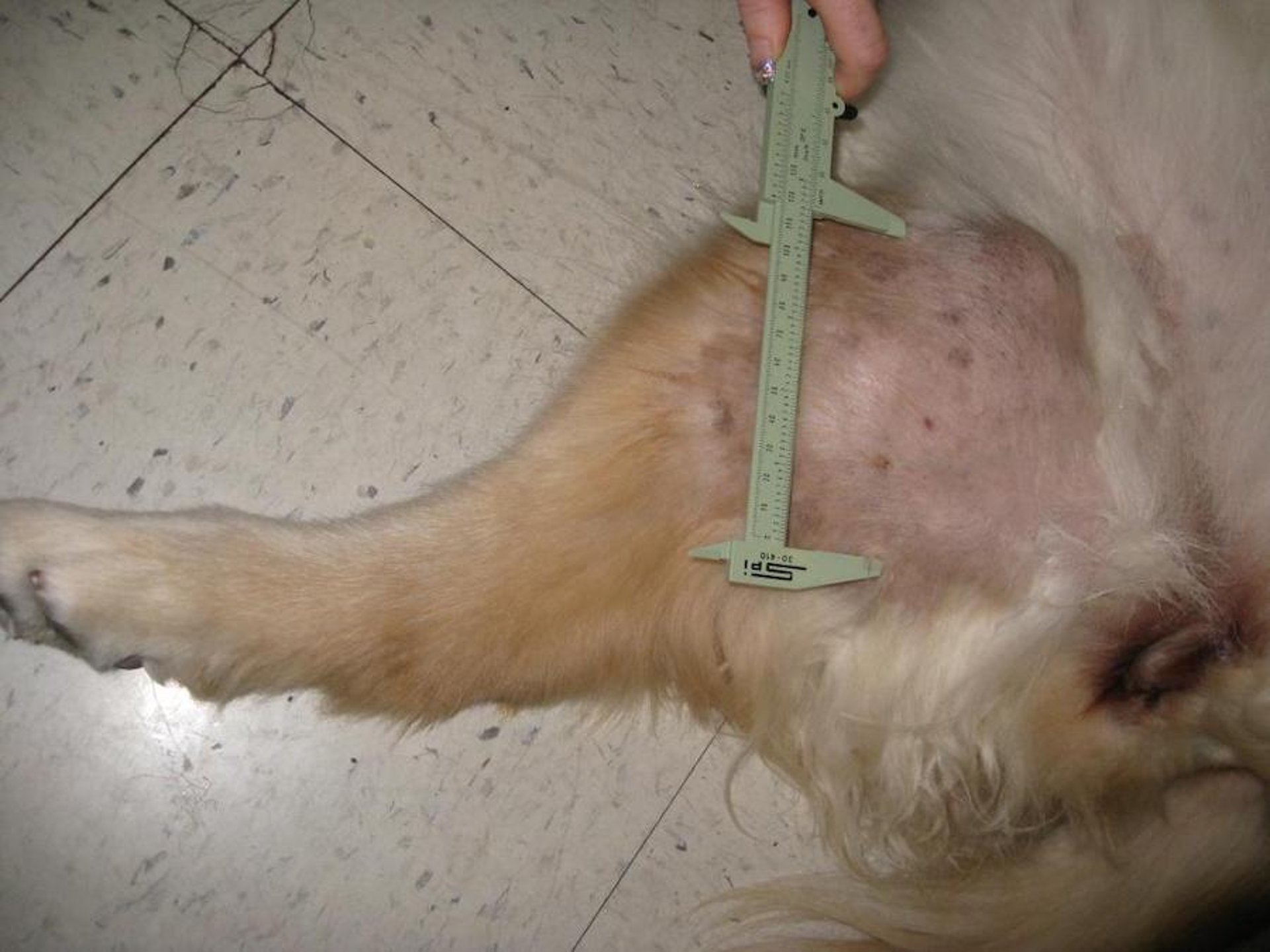Courtesy of Dr. Alice Villalobos.
Undifferentiated and anaplastic sarcomas are malignant mesenchymal tumors and are difficult to characterize microscopically. They often require immunohistochemistry to detect cellular markers to determine phenotype. Undifferentiated sarcomas lack distinctive features (eg, architectural patterns, cytoplasmic and nuclear features, cell products). Anaplastic sarcomas have most of the following features: variations in size and shape of nuclei, nuclear hyperchromasia, striking irregularity of chromatin pattern, abnormal mitotic figures, and large numbers of mitotic figures. Anaplastic sarcomas are generally undifferentiated; however, undifferentiated sarcomas do not have to be anaplastic.
In both cases, excision should be deep and wide, with 3-cm margins along with a combination of the intraoperative and followup oncologic therapy techniques described above, because the first surgery with immediate followup is most important in determining outcome. The prognosis is generally poorer for anaplastic sarcomas than for undifferentiated sarcomas.
For More Information

